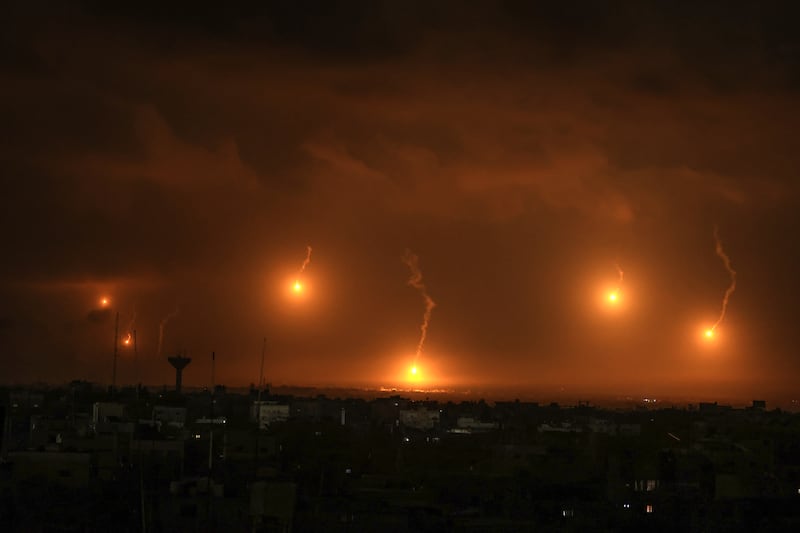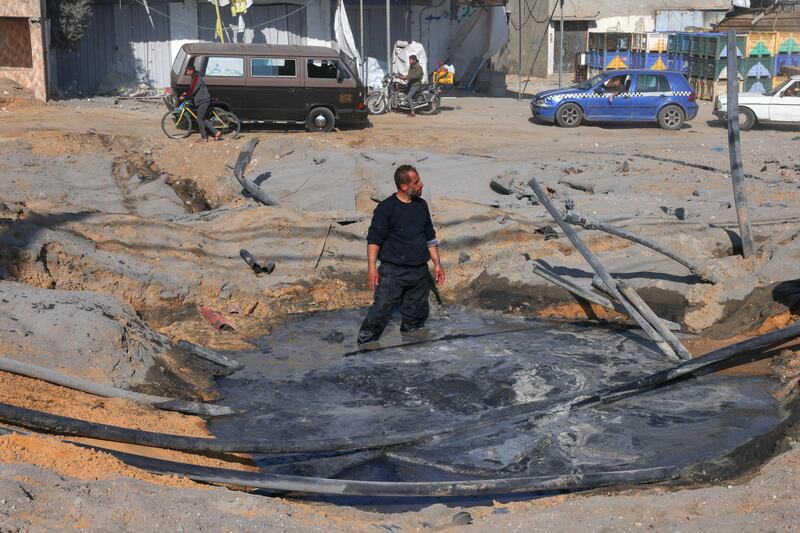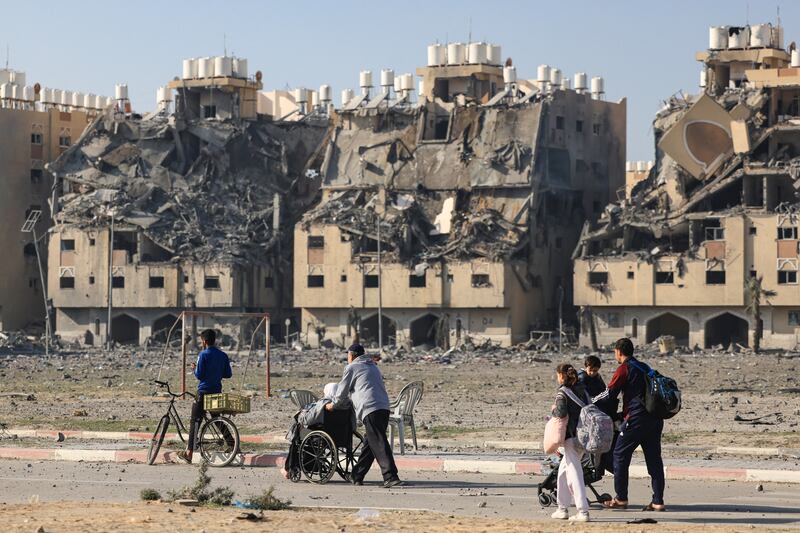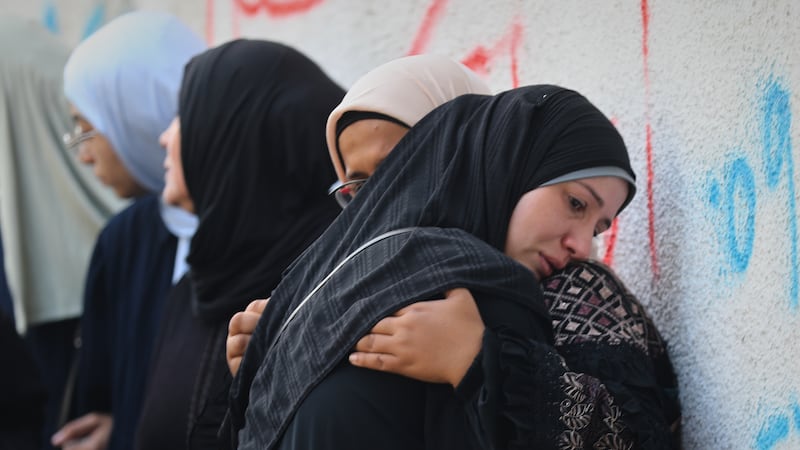Israel has pounded more targets in the southern Gaza Strip, intensifying a renewed offensive that followed a weeklong truce with Hamas and prompting renewed concerns about civilian casualties. Israel also shelled southern Lebanon on Saturday morning.
At least 200 Palestinians have been killed since the fighting resumed on Friday morning, even as the US urged ally Israel to do everything possible to protect civilians.
“This is going to be very important going forward,” secretary of state Antony Blinken said on Friday after meetings with Arab foreign ministers in Dubai, wrapping up his third Middle East tour since the war started. “It’s something we’re going to be looking at very closely.”
Many of Israel’s attacks on Saturday were focused on the Khan Younis area in southern Gaza, where the military said it had struck more than 50 Hamas targets with air strikes, tank fire and its navy.
RM Block
The military had dropped leaflets the day before warning residents to leave but by late Friday there had been no reports of large numbers of people leaving, according to the United Nations.
“There is no place to go,” said Emad Hajar, who fled with his wife and three children from the northern town of Beit Lahia a month ago to seek refuge in Khan Younis.
“They expelled us from the north, and now they are pushing us to leave the south.”
Two million people – almost Gaza’s entire population – are crammed into the territory’s south, where Israel urged people to relocate at the war’s start and has since vowed to extend its ground assault.
Unable to go into north Gaza or neighbouring Egypt, their only escape is to move around within the 220sq km (85 sq mile) area.
In response to US calls to protect civilians, the Israeli military released an online map, but it has done more to confuse than to help.
It divides the Gaza Strip into hundreds of numbered, haphazardly drawn parcels, sometimes across roads or blocks, and asks residents to learn the number of their location in case of an eventual evacuation.

“The publication does not specify where people should evacuate to,” the UN office for co-ordinating humanitarian issues in the Palestinian territory noted in its daily report. “It is unclear how those residing in Gaza would access the map without electricity and amid recurrent telecommunications cuts.”
Egypt has expressed concerns that the renewed offensive could cause Palestinians to try to cross into its territory. In a statement, the country’s foreign ministry said the forced transfer of Palestinians “is a red line”.
A spokesperson for the United Nations Interim Force in Lebanon (Unifil) told Reuters that there was shelling of southern Lebanon from Israel on Saturday morning that hit close to its headquarters near the coastal town of Naqoura and around the border village of Rmaych. The Israeli military said it carried out shelling near Naqoura as a warning after spotting “unusual activity” in the area.
Unifil then detected fire from the area of Tayr Harfa, about 2km from the Israeli frontier, toward Israel.
Lebanon’s heavily armed Hizbullah said in a statement on Saturday morning that one of its fighters was killed in southern Lebanon but did not give details. It also said it fired rockets towards Israel.

A team from Israel’s Mossad intelligence services was in Doha on Saturday for talks with Qatari mediators for another pause in fighting in Gaza, a source briefed on the visit told Reuters.
The Qatar-mediated talks focused on the potential release of new categories of Israeli hostages other than women and children and the parameters of a truce, which the source said differed to the truce agreement that collapsed on Friday. Israel’s military says Hamas still holds 136 hostages, having freed 105 during the truce. Israel has freed 240 Palestinian prisoners, mostly women and children.
Israel and Hamas have been considering new parameters for the release of hostages and the truce since before it collapsed.
The truce which began on November 24th saw Hamas release Israeli women and children taken hostage on October 7th in exchange for the release of Palestinians, including women, held in Israeli prisons.
Israel and Hamas have traded blame over the collapse of the truce, which lasted a week and was extended twice before mediators were unable to find a way for a third extension.
Israel accused Hamas of refusing to release all the women it held. A Palestinian official said the breakdown occurred over female Israeli soldiers.

Meanwhile, US vice-president Kamala Harris is expected to outline proposals with regional leaders to “put Palestinian voices at the centre” of planning the next steps for the Gaza Strip after the conflict, according to the White House.
President Joe Biden’s administration has been emphasising the need for an eventual two-state solution, with Israel and a Palestinian state coexisting.
The war began after the October 7th attack by Hamas and other militants, who killed about 1,200 people, mostly civilians, in southern Israel and took around 240 people captive.
After the end of the truce, militants in Gaza resumed firing rockets into Israel, and fighting broke out between Israel and Hizbullah militants operating along its northern border with Lebanon.
Hundreds of thousands of people fled northern Gaza to Khan Younis and other parts of the south earlier in the war, part of a mass exodus that has left three-quarters of the population displaced and facing widespread shortages of food, water and other supplies.
On Saturday an Israeli spokesperson said several trucks carrying humanitarian aid had been allowed to enter Gaza after getting security clearance on the Israeli side, the first such trucks to have been admitted since the resumption of hostilities. - Additional reporting by Reuters

















